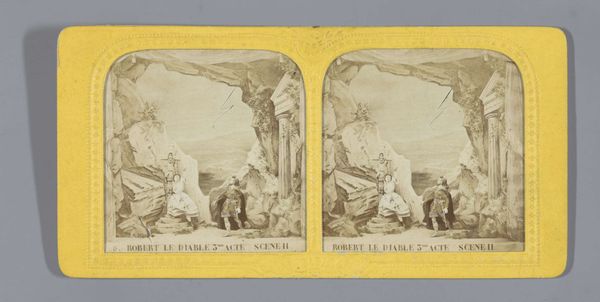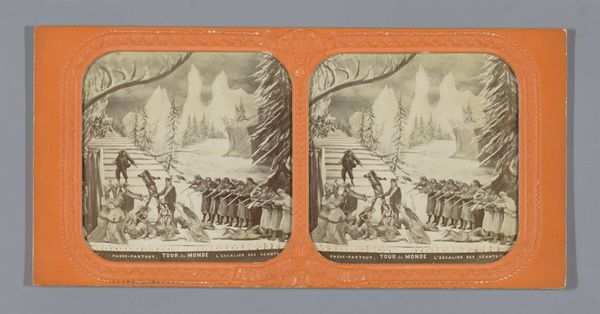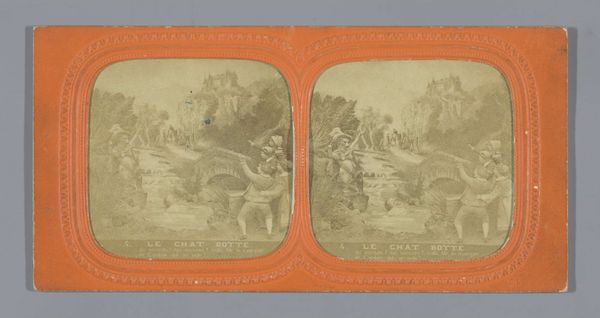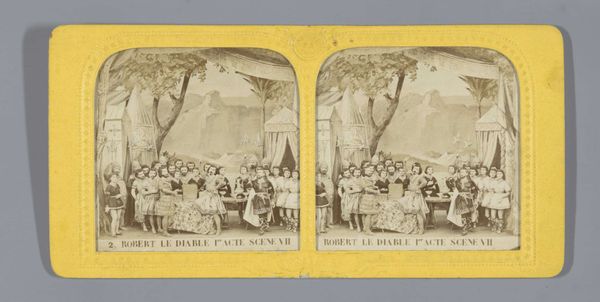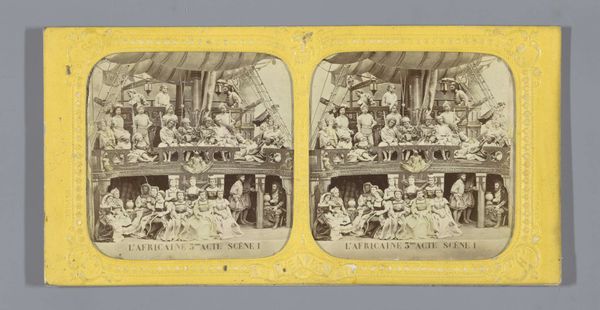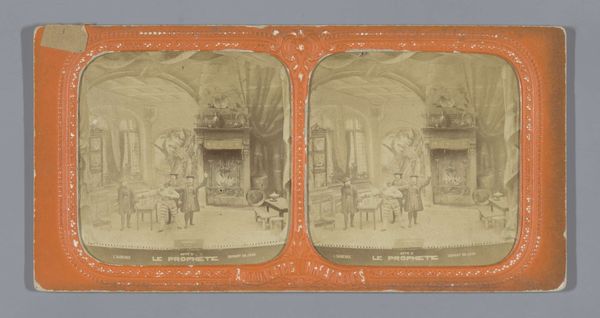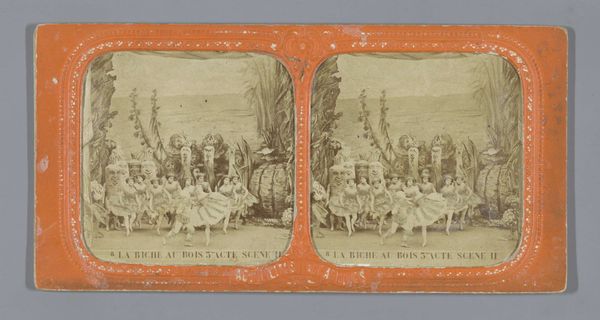
#
aged paper
#
toned paper
#
homemade paper
#
sketch book
#
personal sketchbook
#
coloured pencil
#
watercolour bleed
#
watercolour illustration
#
sketchbook art
#
watercolor
Dimensions: height 88 mm, width 178 mm
Copyright: Rijks Museum: Open Domain
Curator: At first glance, the entire diptych comes across as quite dreamlike and ephemeral, wouldn't you agree? The almost monochrome palette emphasizes a focus on line and form. Editor: Indeed. This is "Scène uit Assepoester," or "Scene from Cinderella," created by Charles Dauvois in 1867. It's particularly fascinating as a stereoscopic card. Consider that Dauvois, though somewhat obscure now, was deeply embedded in the cultural milieu of the Second Empire. Curator: Absolutely. Examining this as an artifact of material culture, the specific use of stereoscopic cards to depict a widely loved story aimed at mass consumption is interesting. It provided a novel method for the rising middle class to own art depicting theatrical experiences. Note the elaborate set design mimicked here—miniature sets! Editor: The theatre connection is significant, transforming a familiar narrative into a consumable spectacle, reproduced on photographic paper. One can only wonder about the workers employed in mass-producing these cards. What was their relationship to this imagery, and to the rising popularity of theatrical narratives? Curator: Furthermore, the stereoscopic card served as both documentation and popularization. Consider, the creation process would have been intricate. Dauvois likely sculpted and assembled miniature set pieces and characters. I imagine labor divided across a small workshop. What’s truly remarkable is how he translated a complex theatrical presentation into something accessible for domestic consumption. Editor: Agreed. And don’t underestimate the implied societal message within. It solidified accepted codes of conduct and highlighted particular roles in culture—princes and potential brides. And it democratised elite theatre. But how much choice were workers afforded in how they worked on these images and did they participate in this consumption of theatre themselves? Curator: Good point. I think both the beauty and the social factors surrounding "Scene from Cinderella" make this a fascinating artifact, and a unique example of its type. Editor: I agree wholeheartedly. Hopefully, this will allow viewers to explore how mass production played a crucial part in creating a fantasy in people’s domestic life and social structure.
Comments
No comments
Be the first to comment and join the conversation on the ultimate creative platform.

